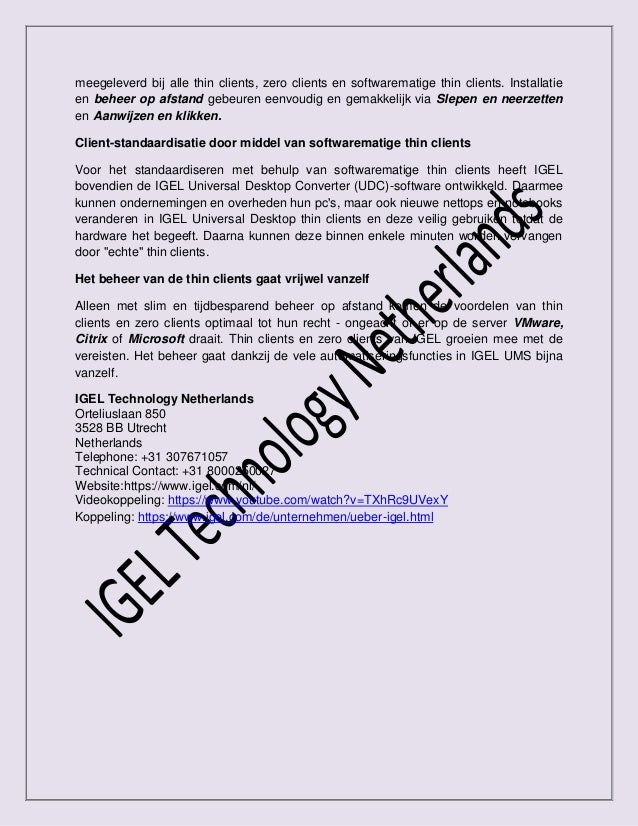

The terms thick client and thin client, however, have double meanings, as thick and thin also are used to describe the applications or software. Leave the apps open when you turn off the client.In last week’s Did You Know article we discussed the differences between thick clients (also called fat clients) and thin clients in terms of hardware. Access files and network resources on the remote PC. With a Remote Desktop client, you can do all the things with a remote PC that you can do with a physical PC, such as: Use apps installed on the remote PC. By client, we mean the application that runs on a PC or workstation and relies on a server to perform some operations.Microsoft Remote Desktop clients let you use and control a remote PC.
Microsoft Thin Client Software Torrent Speed Optimizer
For example, a terminal or Java-based client would be considered a thin client whereas one running Microsoft Windows would be considered a thick client.One major inconsistency when describing thick and thin is that the hardware may be thin but the applications or software running may be thick. It is a thin P2P.A great starting point to discuss the nature of the underlying differences would be to start with an example of thick and thin based on an operating system and the applications. UTorrent Speed Optimizer is a modern P2P acceleration plugin to a highly popular BitTorrent client - uTorrent.
It would be a massive headache for IT to both deploy and maintain.When using thin clients, compared to a feature-rich desktop PCs today, they often tend to look a bit primitive and outdated. For this reason, thin clients are often deployed in hotels and airports, where installing software to all systems wouldn’t make sense. This allows all end users’ systems to be centrally managed and software deployed on a central server location as opposed to installed on each individual system.Thin clients are really best-suited to environments in which the same information is going to be accessed by the clients, making it a better solution for public environments. At times, thin may be defined as simply not needing the software or operating system installed on the user machine. Thin starting at the operating system level, rather than at the CPU, it’s logical.A thin client machine is going to communicate with a central processing server, meaning there is little hardware and software installed on the user’s machine.
Unlike thin clients, thick clients do not rely on a central processing server because the processing is done locally on the user system, and the server is accessed primarily for storage purposes. Some may not even require a mouse.In contrast, a thick client will provide users with more features, graphics and choices making the applications more customizable. To use the client, an input device (keyboard) and viewing device (display) is usually the basic requirements.
Looking Towards Smart ClientsOver the past few years, has started to move towards smart clients, also called rich clients. The trade-off is a more robust and local computing environment. Additionally, thick clients often require operating specific applications, again posing more work and limitations for deployment. To maintain a thick client, IT needs to maintain all systems for software deployment and upgrades, rather than just maintaining the applications on the server.
That is, they can work with data even when they are not connected to the Internet (which distinguishes them from browser-based applications, which do not work when the device is not connected to the Internet). A thin client, smart clients are Internet-connected devices that allows a user’s local applications to interact with server-based applications through the use of Web services.For example, a smart client running a word processing application can interface with a remote database over the Internet in order to collect data from the database to be used in the word processing document.Smart clients support work offline. More similar to a fat client vs.
Smart clients are most often contrasted with Web browser clients (or browser-based applications).Be sure to check our previous discussion on Thick and Thin in terms of hardware.According to a 2004 Jupiter Research report, 73 percent of corporations surveyed reported that they had migrated at least one enterprise application from a client-server model to a Web-based model. For example, if the client is Windows-, Java- or Flash-based, you need to have that runtime on the user machine. Smart clients will offer rich GUIs, and overall development and maintenance costs are higher than, for example, thin clients.On the downside, smart clients require users to install or deploy a runtime a library routines that are bound to the program during execution.
She is a frequent contributor to EcommerceGuide and managing editor at Webopedia. Servers are often dedicated, meaning that they perform no other tasks besides their server tasks.A network architecture in which each computer or process on the network is either a client or a server.Based in Nova Scotia, Vangie Beal is has been writing about technology for more than a decade. Typically, a client is an application that runs on a personal computer or workstation and relies on a server to perform some operations.A computer or device on a network that manages network resources.


 0 kommentar(er)
0 kommentar(er)
